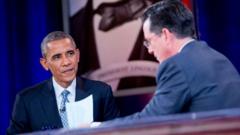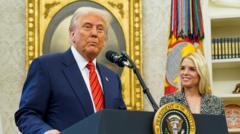In response to President Trump's call for increased military budgets, NATO is exploring broadened spending parameters, potentially reallocating funds to cover nontraditional defense enhancements while aiming for a collective 5% investment by 2032.
NATO Adapts Military Spending to Meet Trump’s Demands

NATO Adapts Military Spending to Meet Trump’s Demands
European nations look to redefine defense spending to comply with U.S. President Trump's new financial goals for NATO.
In a significant shift, NATO countries have begun to reconsider their defense budgets following President Trump's demand that allies allocate 5% of their national income towards military spending. Many European leaders initially deemed this target impossible, but innovative budgeting strategies may render it achievable.
Plans are emerging that seek to expand NATO’s financial focus to include not only traditional military outlays for troops and weapons but also additional "defense-related" expenses. The proposal outlines a benchmark of 3.5% of Gross Domestic Product for conventional military costs, supplemented with a further 1.5% earmarked for contemporary spending related to defense by the year 2032.
This additional funding may involve vital infrastructure improvements, such as upgrading rail systems and bridges to accommodate military transport, enhancing cybersecurity defenses, and investing in advanced weaponry and technology innovations. Alarmed by the potential reduced U.S. support for European defense, several NATO members are now inclined to shoulder more of their collective financial responsibilities.
Following recent discussions in Turkey between alliance foreign ministers, NATO Secretary-General Mark Rutte emphasized the importance of deploying all necessary resources for defense. He humorously remarked on the importance of ensuring transportation infrastructure could handle military assets, noting, “Sometimes when you cross a bridge in Europe, you hope with your own car that you safely get across it — let alone with a tank.”
As European nations strive to adapt to shifting geopolitical demands, NATO’s financial recalibrations look to not only uphold defense commitments but also recalibrate strategic military positioning in an uncertain global landscape.





















